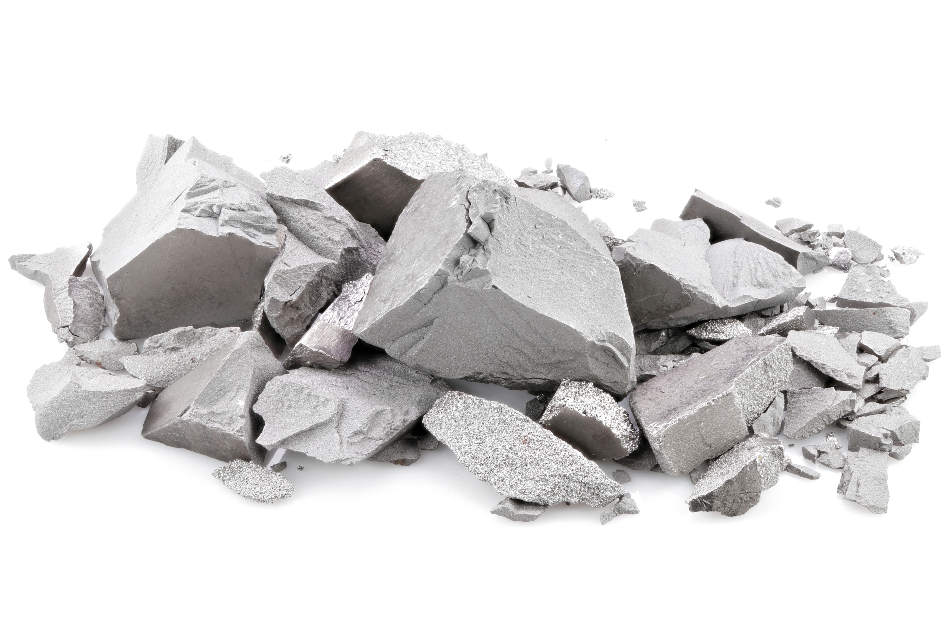Feb 16 2002

Bjoern Wylezich / Shutterstock
Tungsten (W) was one of the first alloying elements to be used methodically—as early as the mid-19th century—to enhance the properties of steel. One of the most significant alloying elements in constructional steels and tool steels, tungsten was added to improve the cutting efficiency, hardness, and speed of tools.
These highly alloyed steels are used mainly in cutting, working, and forming of metal components. Therefore, they must have high strength and hardness, integrated with good toughness, over a wide temperature range.
Tungsten Alternatives
During World War II, due to the shortage of tungsten and growing demand for tools, the U.S. and European steel manufacturers were forced to find an alternative. Molybdenum (Mo) was selected as a substitute to tungsten in varying proportions. This was also economical as the cost was lower, and the atomic weight is only half that of tungsten (1% Mo is approximately equivalent to 2% of W).
Tool Steels
Tool steels are typically categorized into four groups:
- Ledeburitic Cr-steels with less than 1% tungsten are normally used for making thread rolls and dies.
- Steels for plastic molding that do not contain W-bearing steel grades.
- Hot work steels with 1.5%–9% tungsten are used for dies and extrusion tools that work under temperatures of up to 500 °C and more.
- Cold work steels with 0.5%–3% tungsten are used for cutting tools.
High-Speed Steels
High-speed steels (HSS) are tool steels that consist of a combination of over 7 % Mo, W, and vanadium (V), with over 0.60% carbon. Their name is suggestive of their capacity to cut metals at “high speeds.” HSS was in use throughout the 1940s.
Since 1910, the composition of T-1 type with 18% W has not changed and has been the main type used until 1940, when Mo was used as an alternative. Today, merely 5%–10% of the HSS in Europe is of this type and just 2% in the United States.
The toughness and hardness of HSS can be effectively increased by adding about 10% of Mo and W in total, thereby maintaining these properties at high temperatures generated while cutting metals.
HSS continues to be used mainly in the production of different cutting tools: gear cutters, drills, milling cutters, taps, saw blades, etc. However, the use of HSS for dies and punches is also growing.
Table 1. Percentage additions of alloying elements to high-speed steel-grades
| Grade |
C |
Cr |
Mo |
W |
V |
Co |
| T-1 |
0.75 |
- |
- |
18.0 |
1.1 |
- |
| M-2 |
0.95 |
4.2 |
5.0 |
6.0 |
2.0 |
- |
| M-7 |
1.00 |
3.8 |
8.7 |
1.6 |
2.0 |
- |
| M-42 |
1.10 |
3.8 |
9.5 |
1.5 |
1.2 |
8.0 |
Coating
In 1979, the production of HSS in the Western world touched 120,000 tons per year, which has never been accomplished again. In 1996, this dropped to 70,000 tons. One crucial reason for this is the rapid spread of coating techniques like the PVD process, for example, the coating of HSS tools with a thin layer of TiN and other types of coating.
The coating boosts the service life of drills by up to 10 times, or it allows the cutting speed (productivity) to be doubled while the service life stays the same as in the case of uncoated steel.
Another reason for decreasing HSS consumption is the growing transition to cemented carbide tools.
Heat-Resisting Steels
In some cases, tungsten is added where corrosion-resistant steels are employed in higher temperature ranges. Heat-resistant steels are chromium/nickel steels consisting of up to 6% tungsten. The steels are mainly used as valve steels for combustion engines, with about 2% tungsten.
For example, such steels are used for the valves on the outlet area of automotive engines, where the red-hot hardness has to be integrated with high-temperature corrosion resistance.